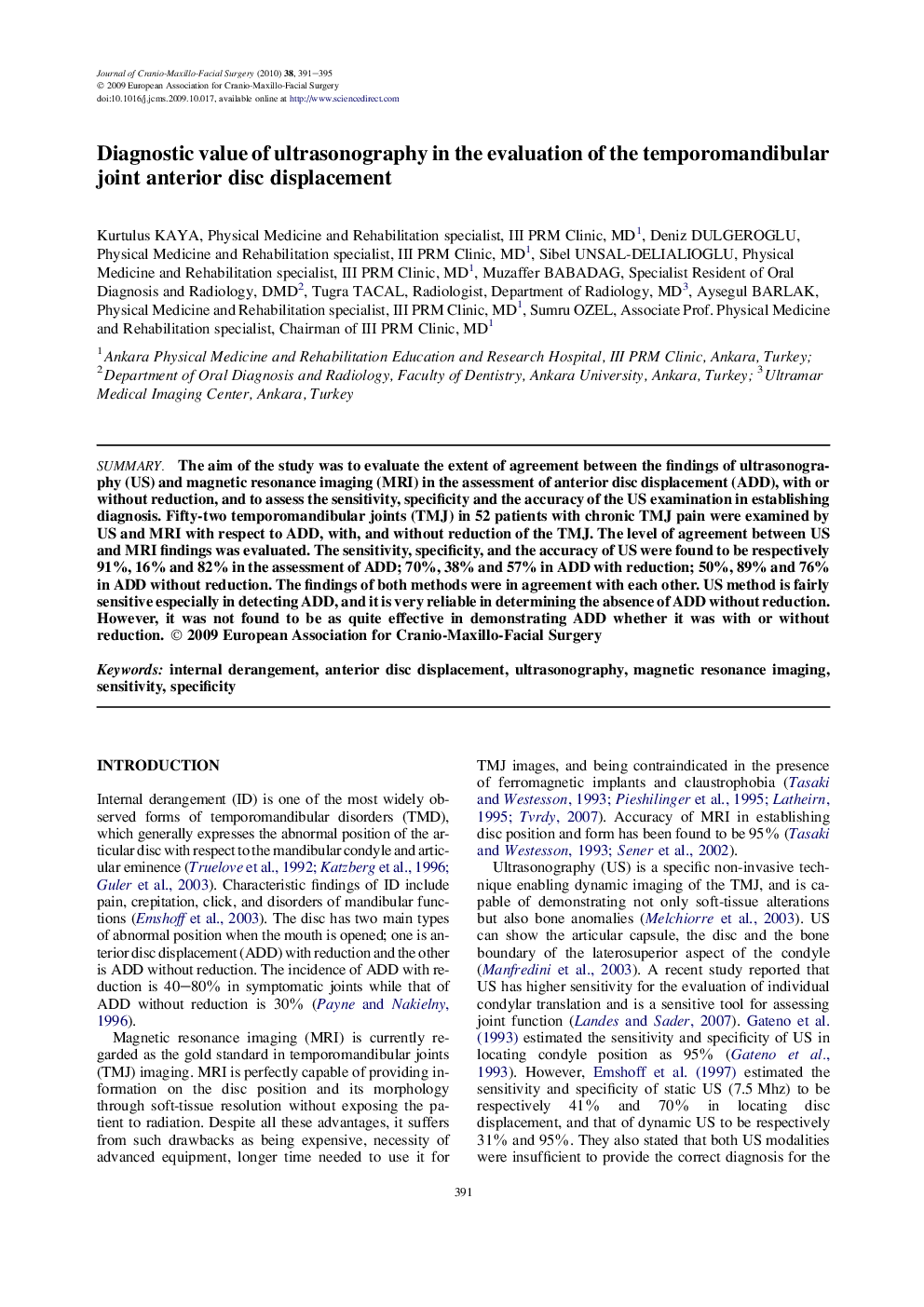| Article ID | Journal | Published Year | Pages | File Type |
|---|---|---|---|---|
| 3143352 | Journal of Cranio-Maxillofacial Surgery | 2010 | 5 Pages |
SummaryThe aim of the study was to evaluate the extent of agreement between the findings of ultrasonography (US) and magnetic resonance imaging (MRI) in the assessment of anterior disc displacement (ADD), with or without reduction, and to assess the sensitivity, specificity and the accuracy of the US examination in establishing diagnosis.Fifty-two temporomandibular joints (TMJ) in 52 patients with chronic TMJ pain were examined by US and MRI with respect to ADD, with, and without reduction of the TMJ. The level of agreement between US and MRI findings was evaluated. The sensitivity, specificity, and the accuracy of US were found to be respectively 91%, 16% and 82% in the assessment of ADD; 70%, 38% and 57% in ADD with reduction; 50%, 89% and 76% in ADD without reduction. The findings of both methods were in agreement with each other.US method is fairly sensitive especially in detecting ADD, and it is very reliable in determining the absence of ADD without reduction. However, it was not found to be as quite effective in demonstrating ADD whether it was with or without reduction.
